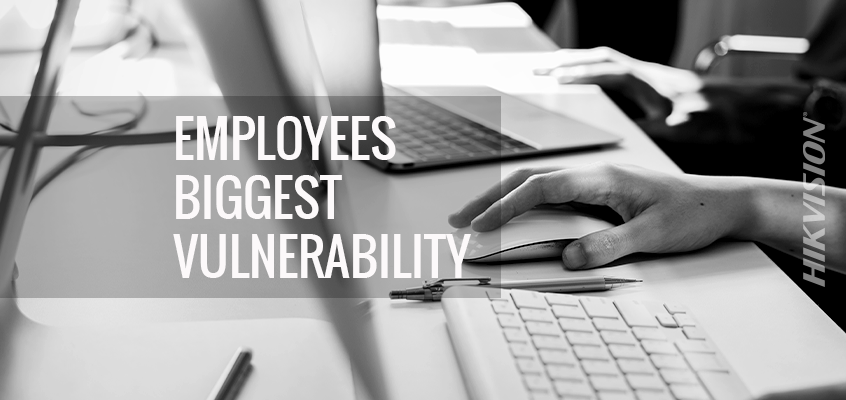How Employees Become the Greatest Threat for Cyber Vulnerabilities, Ways to Mitigate Cyber Risk
Hikvision Explains How to Reduce Security Concerns, Reduce Vulnerability
In the Security magazine article, “Human Error, We Meet Again,” the author explains how employees often become the weakest link in the fight against cyber vulnerabilities.
From the article: “For all the hundreds of firewall rules and network protocols that your security staff may put in place to better safeguard your network, sometimes there’s simply no accounting for the most unpredictable variable of them all: human behavior. Whether through social engineering techniques, bad actors within your own organization, or simple human error, hackers around the world are trained on how to take advantage of a company’s employees and staff in order to gain access to a protected network.”
The article provides these ways to mitigate risk and help improve cybersecurity:
- Enforce employee cybersecurity training and implement a pre-hire vetting process.
- Establish email protocols for employees to handle phishing scams. According to the article “many hackers will attempt to hijack the identities of senior staff within a company in order to impersonate them in emails to other employees.”
- Perform routine audits of your security systems to determine where the greatest threats are appearing within the organization.
You can read the full article here.
How to Reduce Security Concerns
Hikvision recently authored a two-part blog to help partner companies reduce security concerns, “Using Ethical Hackers to Help Your Company Uncover Vulnerabilities.” Click here to read the article, and use this link for part two in the series.
Educating employees on password creation can also support organizational cybersecurity efforts. In a previous Security magazine piece, “The Plight of the Password,” it said: “Some of the largest public breaches have occurred in the past few years, revealing security vulnerabilities that exposed billions of pieces of personal data users assumed were protected behind the veil of their passwords.”
In response, Hikvision’s cybersecurity director, Chuck Davis, outlined six steps to improve passwords and reduce the threat of hack. Here are password tips from that article:
- Create a long, strong password: Develop a strong password, which includes multiple character sets such as uppercase, lowercase, numbers and special characters. Make it long—eight characters or more. Davis added: the longer the password, the better.
- Change default passwords: It’s critically important to change default passwords on all devices, and set a complex password (see tip number one).
- Use a password management tool: As you create more complex passwords that different from site to site, you may find it difficult to remember them. A best practice is to use a “password management tool,” which can help you generate and retrieve complex passwords.
- Where possible, enable multi-factor authentication (MFA): Enable MFA, especially where you have only a username and password protecting sensitive data. Many sites support MFA but not many people are aware that they have the option to enable MFA. The following site lists popular sites and shows how to enable MFA on those sites. https://twofactorauth.org/
- Assign unique, individual usernames: Ensure individual accountability by assigning everyone their own unique username and password, with no sharing of accounts allowed.
You can read the entire article here.

